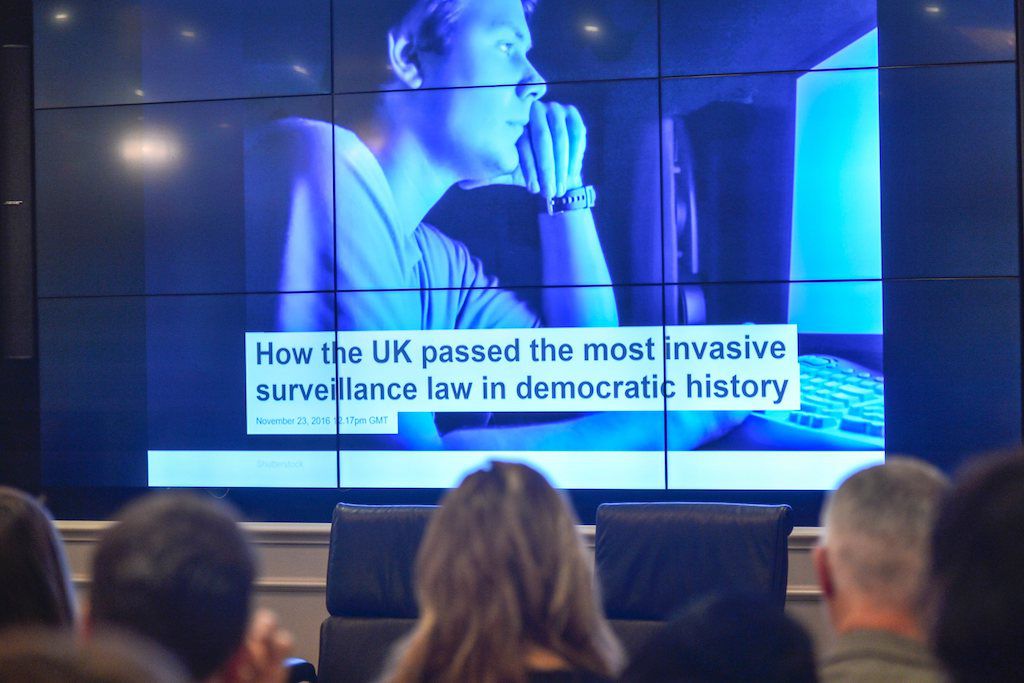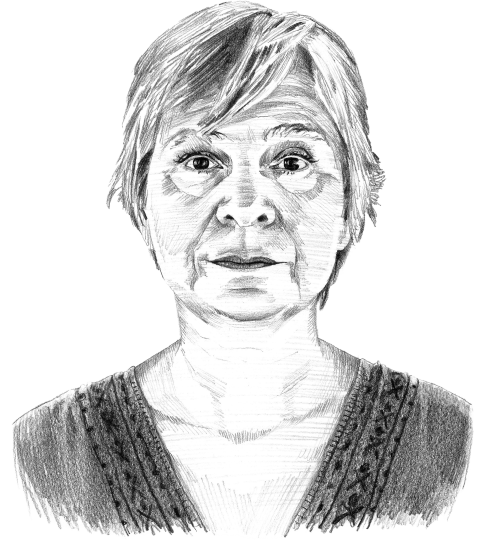Hidden agenda behind the Global Asset Registry project
A global asset registry project aims to pinpoint the true owners of all types of wealth now shielded from tax officials in safe havens across the globe. The project is pursued by a group of economists who think of income inequality as the worst economic evil of our time.

In a nutshell
- GAR would identify every taxpayer’s ‘true’ asset ownership anywhere on the globe
- It would also map the magnitude and trajectory of individuals’ wealth in the long run
- GAR creators aim to end tax evasion and ease economic inequality as a result
Tracking and filing past, present and even future ownership of all forms of wealth possessions around the globe may sound like an impossibly ambitious project. Yet this is precisely what a group of tax specialists led by high-profile economists Joseph Stiglitz, Thomas Piketty and Gabriel Zucman purports to do: lay the foundations for the creation of a global wealth asset registry (GAR), which could, over time, provide a full picture of each individual and corporate taxpayer’s “true” asset ownership worldwide. The announced purpose of this unprecedented “anti-evasion tool” is to eliminate the veil of “deep financial secrecy” still surrounding much of the “world’s wealth.”
Given modern states’ financial and technological capacities, such a project is no longer a futuristic utopia, but a “feasible” and “sensible” option, assert the experts (who form the Independent Commission for the Reform of International Corporate Taxation, or ICRICT) – in a preliminary road map released on March 25, 2019.
The global registry should reveal ‘beneficial,’ not merely legal, asset holders, GAR proponents urge.
Even if many details are yet to surface, several hints as to how an “ideal” GAR could be built and how it could be implemented on a global level, are provided in this potentially far-reaching document. Surprisingly, the media have paid little attention to it. The December 2019 publication of ICRICT’s pilot study for a Britain-wide asset registry went just as unnoticed at home and internationally.
Scoping wealth
In the UK study, presented as a “stepping stone” toward a GAR, the authors opt for a broad definition of wealth. It includes tangible as well as intangible assets: land, real estate, buildings, cars, yachts, private jets, gold and other precious metals, jewelry, art, antiques, racehorses, livestock, trademarks, patents, extractive licenses, intellectual property, as well as cash, bank accounts, life insurance, securities and even crypto-assets. How should these assets be valued – at their prevailing market prices, or some other way – remains to be clarified.
The GAR’s scope may further depend on a “threshold,” but how high should it be? Assets above $10,000, for example – or, say, $100,000? To determine “net” wealth, debt obligations (mortgages, charges, lawsuits) also might be included. On these and other matters, ICRICT still seeks comments from the general public.
In a recent academic article, ICRICT commissioner Zucman recommends that the “present value of future Social Security benefits” ought to be excluded from the definition of “marketable wealth” and so should “human capital.” The sole fact that the issue is raised, however, speaks volumes of the GAR’s designers’ seemingly boundless determination to reach their goal.
Following the money
The global registry should reveal “beneficial” – not merely legal – asset holders, ICRICT urges. New methods for pinpointing owners with ever greater accuracy may therefore be required, such as the development of a “global individual unique identifier.”
The proposed archive should be all-encompassing in the sense that there would be “one for the world,” applicable everywhere, so that “criminals and others trying to remain hidden” (to quote ICRICT’s terminology) cannot go on exploiting loopholes in the system and “stash away” their money in tax havens.
Finally, the GAR should contain “historical” data. By relying on blockchain technology, it should be capable of mapping the magnitude and trajectory of wealth in the long run. The idea of tracing back, over several years, the entire chain of asset ownership is to work out who owned what, at what time, whether that person’s assets were “obtained through legal means and funds,” and whether “applicable taxes have been paid.”

The “share of inheritance in the economy” is another variable that interests ICRICT commissioners Piketty and Zucman. It is through people’s succession planning that the future might invite itself into the GAR framework. Revealing to whom given assets are going to be transferred after the death of their current holders, living wills can be expected to receive special attention in this setting as well.
Square one
The ICRICT’s recent feasibility study for the UK indicates that a GAR might be built up partly from what is there, and partly from scratch.
The unified national registries could be woven together into an interconnected international public asset registry.
In most countries, several transparency measures and data-collection infrastructures are already in place. While information about property owned by individuals is searchable through a range of traditional registers (those of land and real estate, for instance), beneficial ownership structures usually are not. To prevent people from concealing properties behind smokescreens, some legislations, such as the Canadian province of British Columbia, have started to require companies, foundations, trusts, and partnerships, which own or buy land, to disclose their beneficial owners.
Concerning bonds and securities traded in financial markets, Central Securities Depositories (CSDs) are presented by ICRICT as a reliable source of information. However, as in many transactions a multitude of banks, brokers and accounts can be involved, beneficial ownership may once again be hard to trace. While in Brazil, South Africa and some Nordic and Baltic countries CDSs have begun to collect data on beneficial owners, the European ones need to be “upgraded,” ICRICT points out.
Piecing info together
For each country, one could imagine the existing asset registries to be extended and integrated into a single consolidated national framework. In the next step, the unified national registries of a given group of countries could be woven together into an interconnected network, which might progressively feed into a larger international public asset registry. For the resulting (necessarily vast and complex) platform to be effective, the displayed data must be “machine-readable,” ICRICT indicates.
Intergovernmental coordination being its privileged policy tool, the European Union could be a perfect match for testing the creation of a GAR through the extension of national registries. ICRICT thinks Europe is a great place to start also because much of the world’s wealth is concentrated there.
Above all, the EU is considered a champion of transparency and anti-corruption. Since the financial crisis, it has built up an impressive arsenal for combatting financial crime (the Fifth Anti-Money Laundering Directive of May 2018, for example) and tax evasion – the automatic exchange among tax authorities of information regarding bank accounts appears to work nowhere better than in the EU.
Data detection
Obviously, ICRICT wants to achieve more, suggesting that linking “existing data” may be good, but providing “missing data” is better.
Entirely new surveillance frameworks and data-mining computer systems and ever more performant “all-in-one” social analytics, and other transparency instruments are required to close the gaps left open by the current data-collection infrastructures, it is forcefully argued – the purpose being to achieve what global data provider Thomson Reuters zealously calls a “frictionless compliance process.”
The GAR should be in ‘open-data format’ – that is, fully documented and publicly available online, most ICRICT experts agree.
In this, the UK (which, ICRICT says, seeks to become the “most transparent country in the world”) is seen once again as a pioneer. The British tax administration has chosen to develop an innovative social network analysis software (“Connect”) to assist authorities in cross-referencing people’s and businesses’ tax records with other databases. These include pension funds, banks (credit card and account movements) and even online platforms (Airbnb, Paypal and eBay, for instance), so as to detect fraudulent or undisclosed activities.
New wealth detectives
Ideally, the GAR should be in “open-data format” – that is, fully documented and publicly available online, most ICRICT experts agree. As they see things, not only national and foreign authorities could easily access and automatically cross-check information on literally anybody’s financial situation. Also, civil society and labor organizations, investigative journalists, academic researchers and even ordinary citizens would have a perfect tool at their disposal for conducting studies, verifying documentation, reporting discrepancies to authorities or, more generally, denouncing corruption and abuses of power. Through such interactions, the registry’s “data quality” could, over time, be substantially improved, the system’s proponents somewhat optimistically assess.
ICRICT economist Zucman himself made it his mission to track down what he calls the “hidden wealth of nations.” Already his doctoral thesis, advised by Thomas Piketty, exposed trillions of dollars’ worth of tax evasion by the “global rich.” The meanwhile associate professor at the University of California, Berkeley, quickly became the world’s leading expert on where the wealthy store away their money.
To capture the “true wealth of the rich,” Mr. Zucman tirelessly says, it is not enough to look at standard administrative sources, such as tax returns and self-reported survey microdata. In his academic work, the 32-year-old “wealth detective,” as Bloomberg calls him, does not hesitate to mobilize unofficial records such as leaked customer lists from offshore financial institutions, like the “Panama Papers.” This leads to papers claiming, for instance, that worldwide, the “0.01 percent richest households evade about 25 percent of their taxes”. Needless to say, a GAR would enormously facilitate Mr. Zucman’s investigative task.
Combatting inequality
It looks like ICRICT deliberately blurs the boundaries between the GAR’s fundamental – descriptive, prescriptive and repressive/dissuasive – goals. At first sight, the registry is presented as a tool for researchers to measure a phenomenon considered by many as one of the most harmful global economic scourges of our time: wealth and income inequality.
Inequality poses “serious risks” to economies (by holding back growth) and, more broadly, to the functioning of democracies (by dividing societies), it is argued. Thus, a GAR could feed policymakers’ reflection on the desired degree of inequality and the appropriate methods for adjusting tax and redistribution schemes accordingly. Punitive taxes and other confiscatory measures are part of the proposed arsenal.
In this perspective, economic equality becomes a moral ideal to which democratic societies should aspire – and the GAR an instrument for achieving it.
The notion of legally acquired private property would be challenged in ways never seen in Western countries before.
Moreover, incentives and deterrence are regarded as crucial. ICRICT makes it clear that a GAR could play its role only if it comes with adequate sanctions for noncompliance. The UK-pilot study proposes, for example, to extend the recently introduced “Unexplained Wealth Orders,” which allows British authorities to freeze and confiscate assets whenever the owners cannot explain how they were acquired.
Another ICRICT suggestion is to recognize ownership over an asset only after its registration. Put differently, the “legal validity” of ownership would be conditional on the assets being properly registered in the GAR. Unregistered assets (like artworks), whose beneficial owners are not clearly identified, should not be allowed to be sold, purchased, traded, inherited, stored in free ports or shown in galleries, ICRICT demands. A withholding tax should be applied to all unregistered assets.
One could say that in today’s world, the right to property is not absolute. States already have significant discretion to restrict individual property rights for the sake of public interest. It is evident, however, that, if ICRICT’s proposals were to be applied, the notion of legally acquired private property would be challenged in ways never seen in Western countries before. Such policy recommendations with no doubt would have profound implications.
One-eyed vision
The right to privacy is not absolute either, ICRICT further claims. Foremost, the experts have in mind fraudsters, tax evaders, money launderers and other criminals who, according to ICRICT’s moralizing logic, do not “deserve” such a right. But what about people who respect the law, whether wealthy or not?
“For the rich, wealth begets power,” Mr. Zucman writes. This is how the wealthy come to “rig the system in their favor” – the quintessence of “injustice,” claims in a recent book the French scholar who recently was commissioned by American Senators Elisabeth Warren and Bernie Sanders to calibrate wealth-tax proposals for their respective presidential programs.
ICRICT economists’ unnuanced loathing of the “superrich” seems to blind them to the fact that, firstly, there is not a “fixed pie” of wealth in society (implying that slices going to those at the top of the ladder would necessarily come to the expense of those down below) and, secondly, not all wealthy people are trying to withhold a portion of it unlawfully. On the contrary, it is often them who create businesses, jobs, and, hence, opportunities for others.
Erosion of privacy
There is one category of individuals the ICRICT wishes to keep a keen eye on: the “quiet rich,” discrete millionaires who refuse to flaunt their fortunes in broad daylight.
Such a powerful surveillance infrastructure would give authorities an unprecedented insight into a globally available jackpot.
Forcing such people to come out of the closet through an open-source GAR could make them vulnerable to violent crimes such as extortion or kidnapping. ICRICT acknowledges the dangers, yet it sticks to its point with a utilitarian argument: “[T]he potential benefit for society as a whole to tackle inequality and financial crimes, ensure transparency and access to information, outweighs the right to privacy of those quiet rich people,” we read in its 2019 road map document.
The tensions and pressures arising within ordinary families, not to speak of defenseless elderly citizens, resulting from the forced disclosure of the full amount and structure of their wealth (including testamentary dispositions) are not mentioned. ICRICT simply closes the debate by claiming that “Being subject to tax is an obligation” and public knowledge of asset ownership “is another one.”
Scenarios
Would a GAR allow policymakers to “revitalize a broken social contract,” as ICRICT hopes? Nothing is less sure.
What one can suspect, though, is that such a powerful surveillance infrastructure would give authorities an unprecedented insight into a globally available jackpot, which could help them salvage the mortally indebted welfare states in the next severe economic crisis. Perhaps this is the ultimate truth behind the myth that a fully transparent society is “fairer” – never mind the resulting erosion of individual freedom.
Whether and when ICRICT’s GAR might ever come into existence is for now uncertain. EU leaders, however, seem generally warm to the idea.
On March 8, 2019, (coincidence or not?), just a few days before ICRICT published its first GAR blueprint, the European Commission approved a proposal by the European Parliament’s Special Committee on Financial Crimes, Tax Evasion and Tax Avoidance (TAX3), which urges the need to launch an EU-level “global initiative for public central beneficial ownership registries.”
Moreover, TAX3 calls for the creation of an “intergovernmental tax body” within the United Nations. These recommendations may indicate that EU authorities are beginning to think along ICRICT lines.






